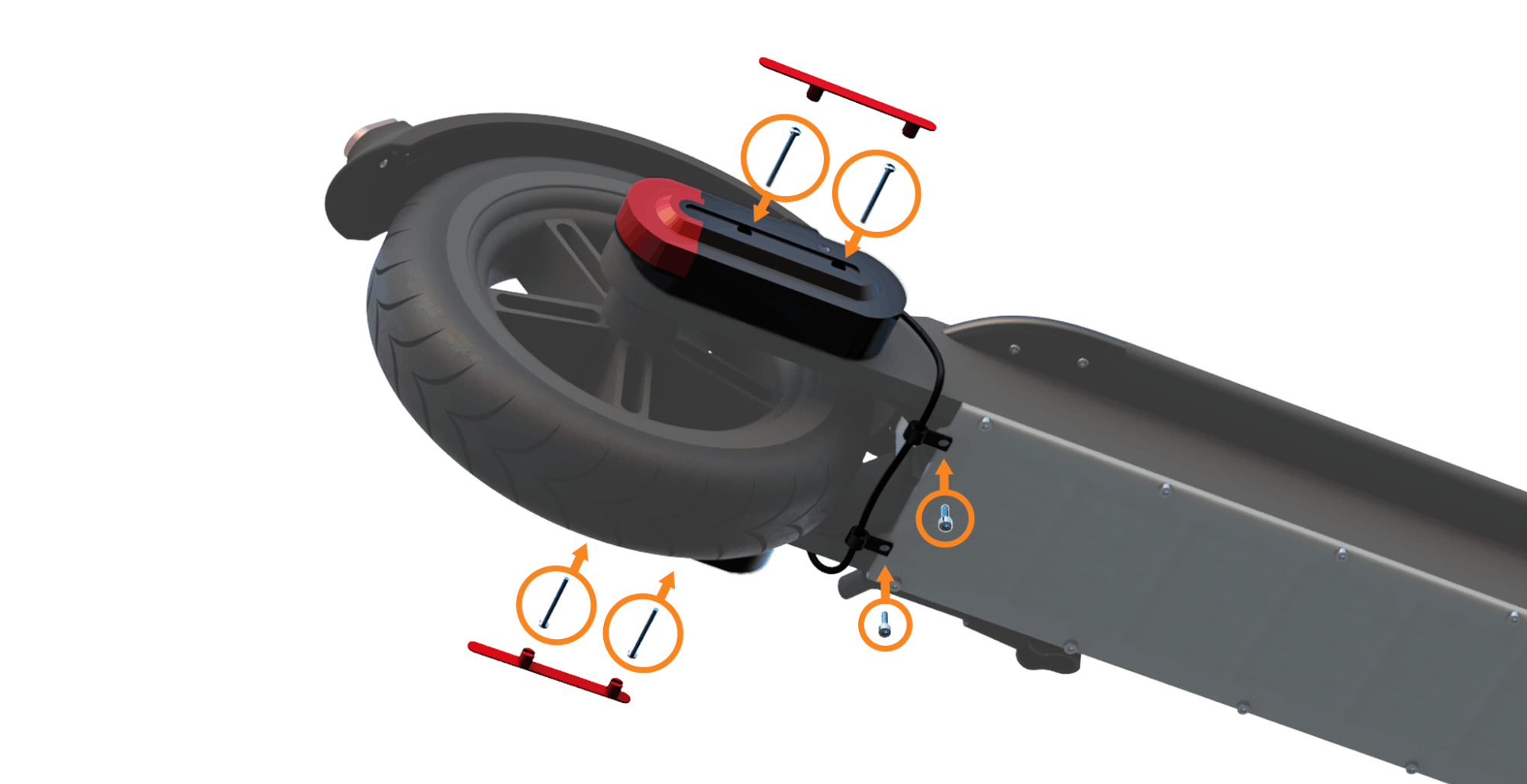
Our method: rLight fixation to the frame with bolts
Lately we've got some suggestions over making rLight quickly removable from scooter’s frame to simplify the charging process. We considered them and rejected. And here is why.
The design process of rLight took around 6 months and passed through 5 editions before we agreed on its final look, size and equipment. Nothing in this world is perfect, so possibly the design of our rear lights is also far from being an ideal, but for sure it thought out to the smallest detail. Yet, this doesn't mean there is no room for improvements.
Lately we’ve got several requests over making rLight quickly removable (for simplifying the charging process) rather than fixed to the scooter’s frame with bolts. Two requests were supported with the specific suggestions, well explained and constructive. Despite we don’t see any problem with charging the rear lights without their removal, we decided to give those suggestions a try.

Our method: rLight fixation to the frame with bolts
Authors of both suggestions considered creating the holders and fixing them to the frame of the scooter with bolts. The lights then should be placed on those holders without using the bolts, thus, granting quick removal when need.
According to the first suggestion the fastening of the lights on the holders should be done via grooves

Rough illustration of suggestion №1
According to the second suggestion the fastening of the lights on the holders should be done via magnets installed both inside the cases of the lights and inside the holders.
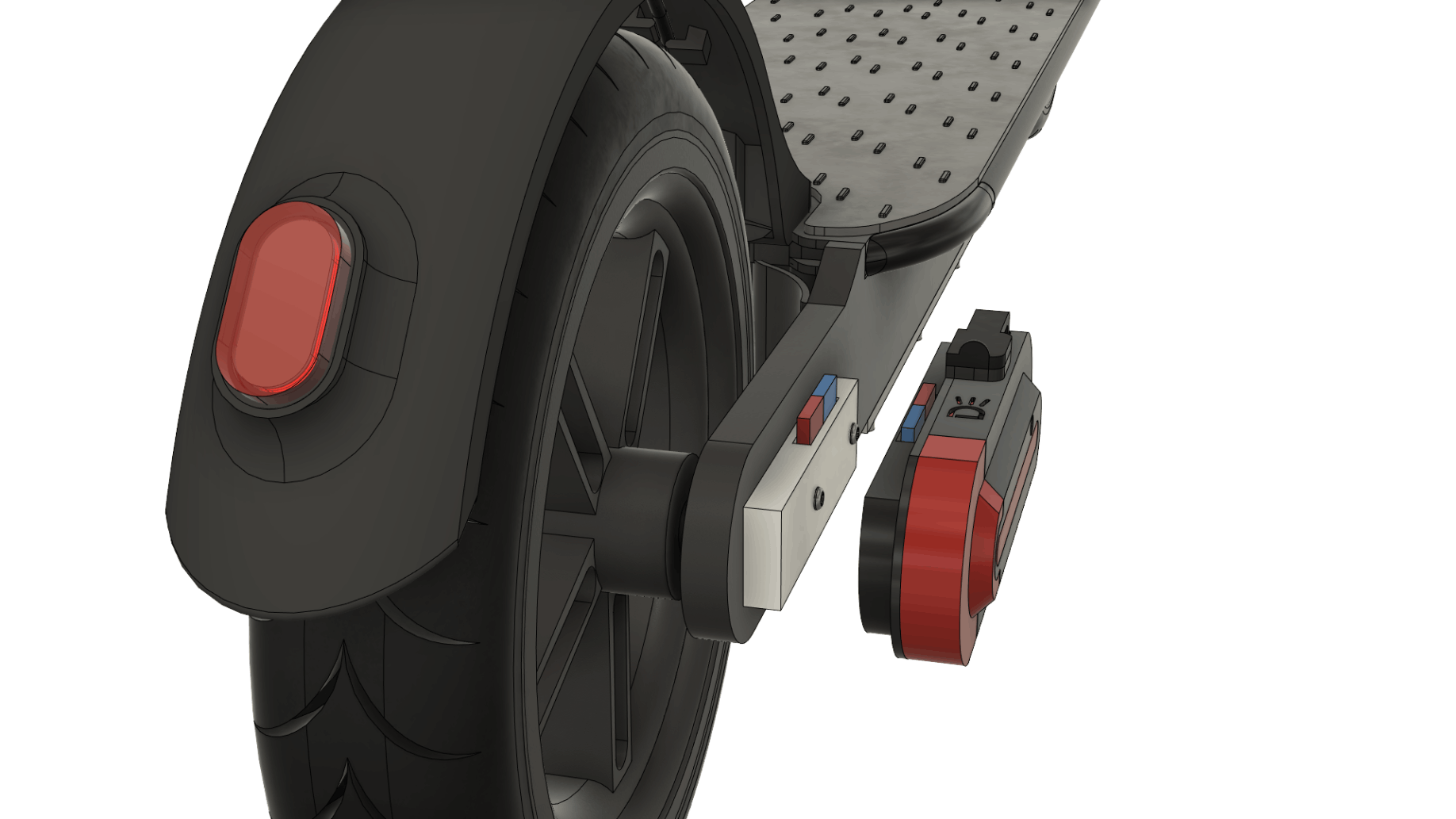
Rough illustration of suggestion №2
We would like to express our big gratitude to the authors of both suggestions for their interest in the project and experience sharing. We took the suggestions into account, but figured out that both of them are unacceptable in three main reasons, let alone some other issues.
The primary reason is the width of each light of the set that should not go beyond Xiaomi scooter deck’s width (at least significantly). Otherwise, there is a high probability you will touch the lights with your foot, hit the doors and walls while carrying the scooter etc. Sure thing, that’s just a path to breaking the lights.
The vivid example is personal negative experience of one of our team member's of using the lights based on 3D model downloaded from Thingiverse about a year ago.
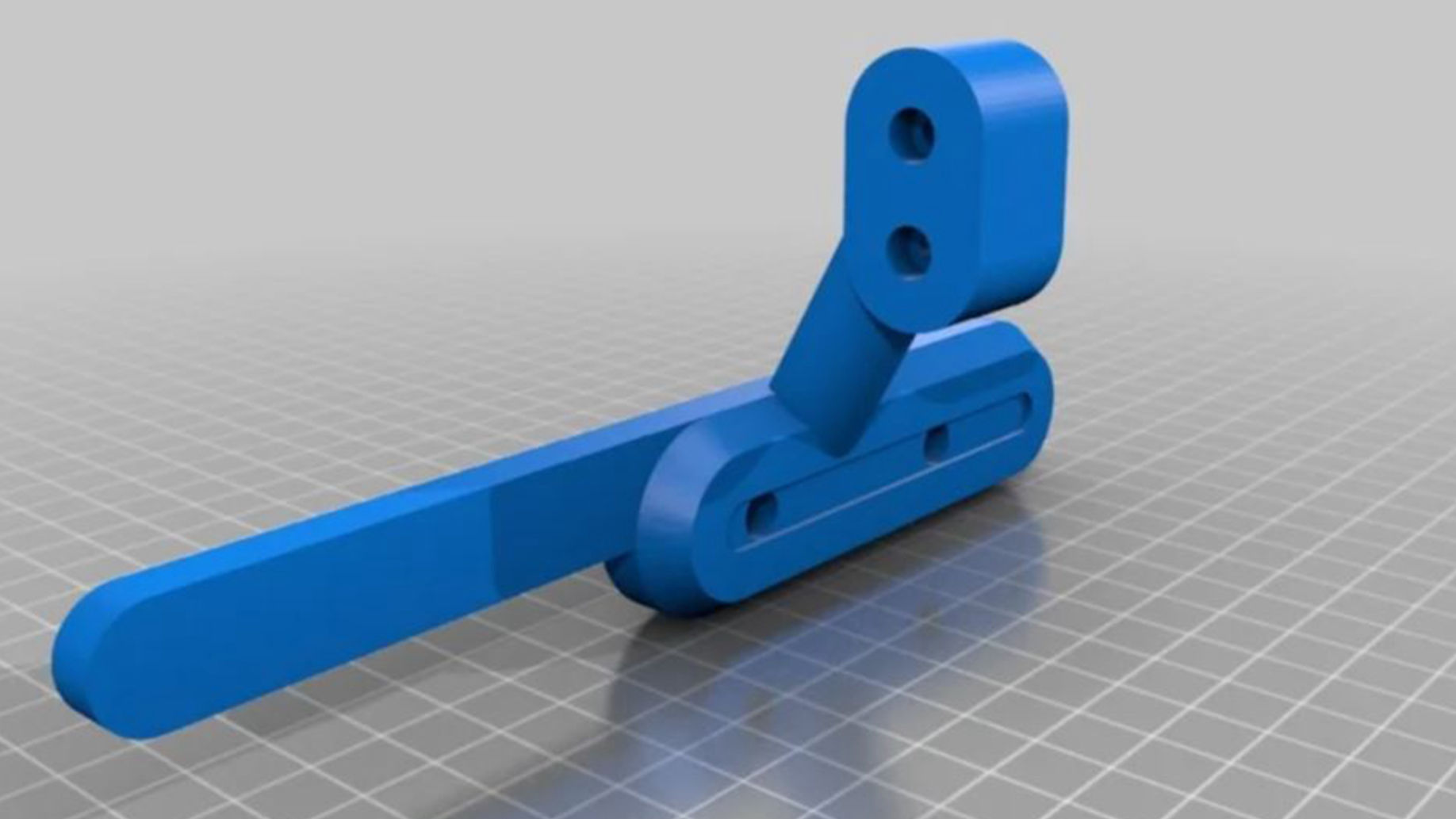
Initial 3D model from Thingiverse
It's design was slightly changed to correspond the requirements set and after all it looked really nice, yet, was removed from the scooter soon after installation.
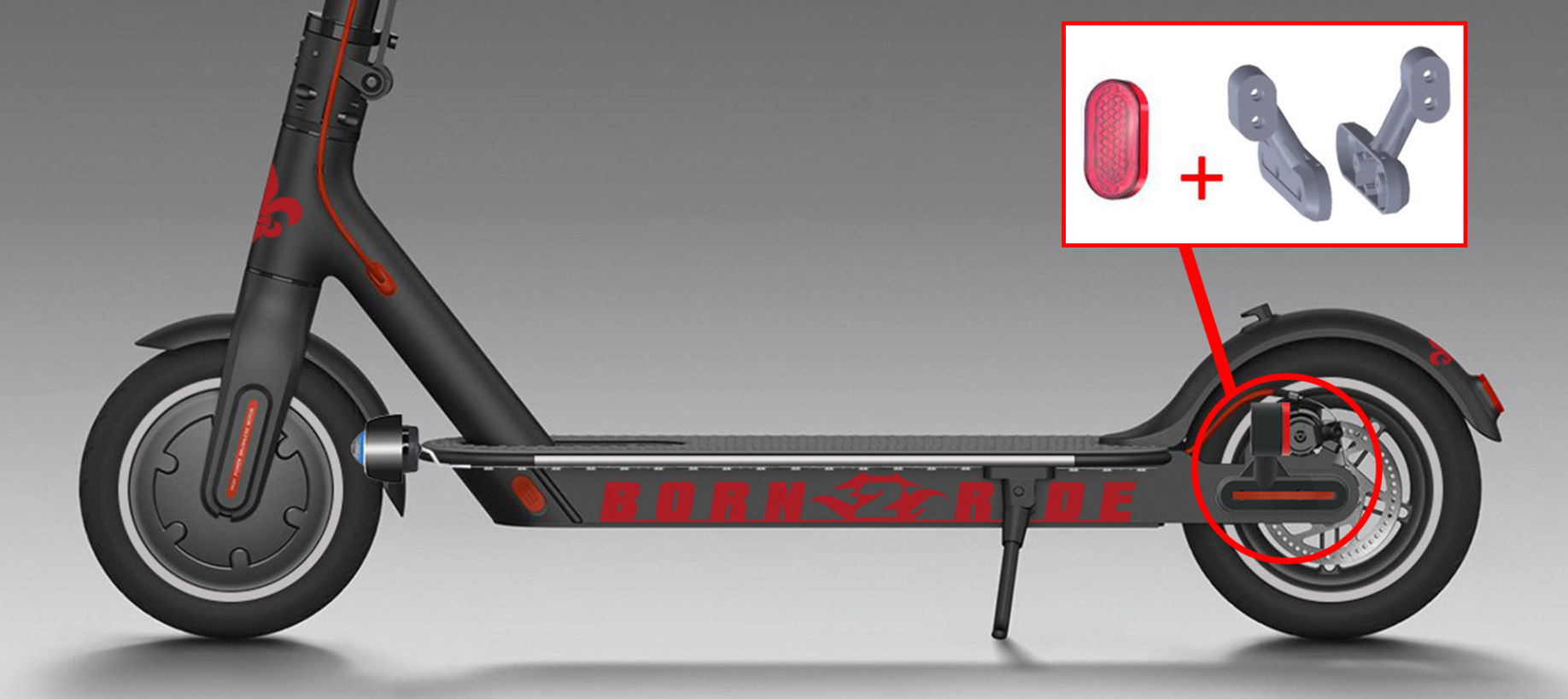
Slightly customized design of Thingiverse model
Right on the second day after installation it got broken for the first time when rider accidentally touched it with his foot, then got glued, but in several days got broken again due to the same reason. This vicious cycle lasted for two weeks until it was understood that nice look should not be achieved at the expense of practicality!
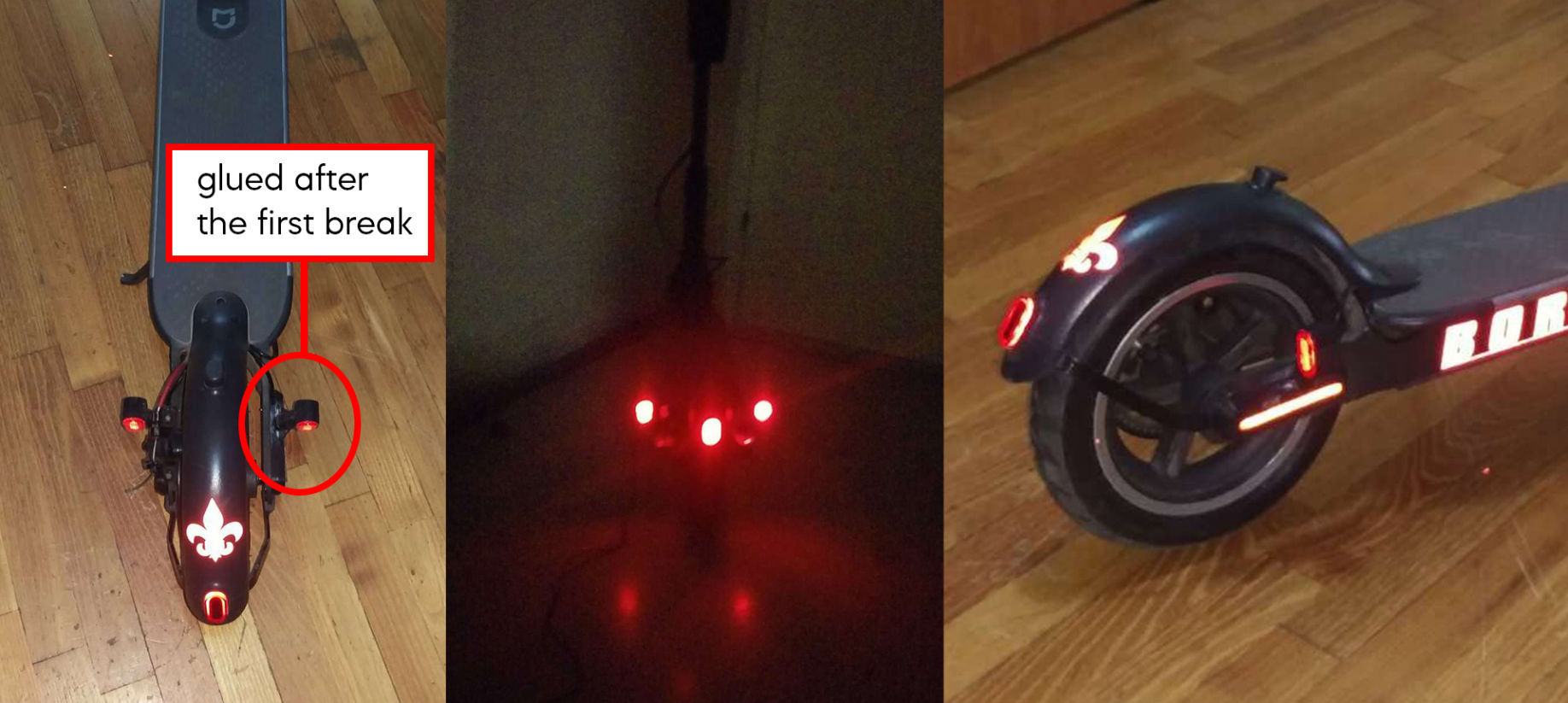
Customized Thingiverse model installed on Xiaomi m365
Moreover, a part of Thingiverse lights got lost on the road after another break, so there was no chance to glue it again.
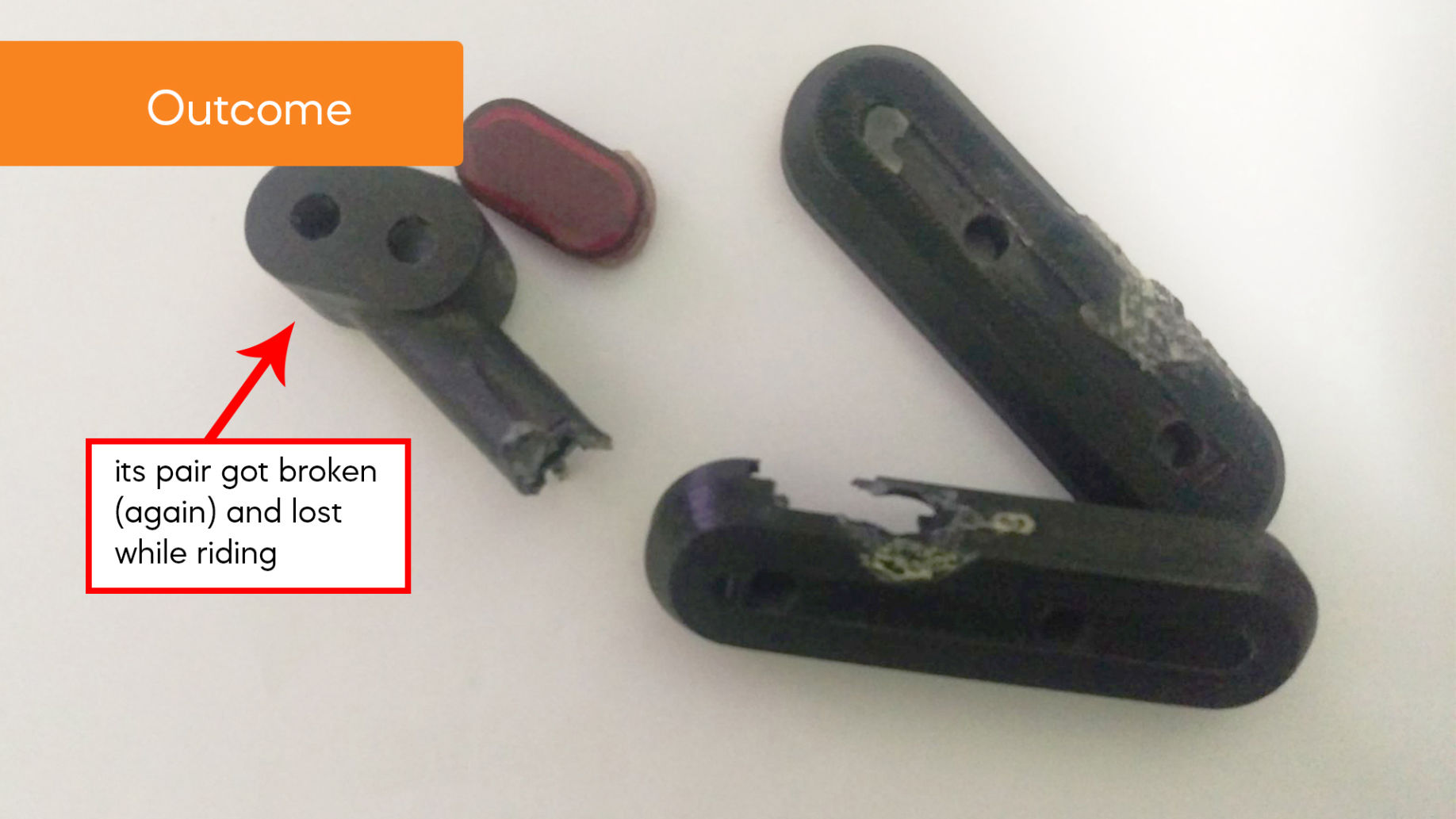
Thingiverse model based lights after two weeks of usage
During outdoor testing period of rLight (3 months of daily rides) we not only didn’t break any prototype, but have never experienced accidentally touching it with our feet!!!
If we look on the sides of the scooter, we can see that average distance between the frame (battery compartment) and the endpoint of its deck is 2.5 cm; the width of each light of rLight set is 2.7 cm; the width of the lights from Thingiverse was 4.2 cm (whereas, as experience shows, 4.2cm = very high probability of breaking).

Width matters!
Now let’s make the simple calculation for the option with grooves. The width of the holder should be minimum 0.2 cm; the internal width of the groove should be at least the same (0.2 cm) + taking into account the probability of the shrinkage, it should have a margin of let’s say 0.1 cm; the width of external wall of the groove also should not be less than 0.2 cm. So, the overall width of the holder with groove is 0.2+0.2+0.2+0.1 = 0.7 cm. The light’s case also needs a groove: external wall (0.2 cm) + internal width (0.2 cm) + margin (0.1 cm). 0.2+0.2+0.1 = 0.5 cm in total. Now let’s sum the width of light case + it’s groove + holder with the groove: 2.7+0.7+0.5 = 3.9 cm. Isn’t it toooooooooo close to 4.2 cm, i.e. to the width of the lights design from Thingiverse?! It is. So, adding the grooves to rLights means making the accessory that you will probably break during the first ride. The holder with magnets should be even wider, thus, it is suitable to rLight even less.
Another question is whether its possible to make the rLight thinner to add the grooves or magnets. No, it’s not! rLight is a set of two lights, all the electronics components are placed in one of them, while all available space of the second one is entirely taken by battery. Moreover, we hardly managed to fit the battery and even had to make the case slightly bigger for this purpose. Ideally it should not exceed 2.5 cm, but as you see the width of the case is 2.7 cm. rLight could be thinner if we didn't follow Xiaomi’s design. But in this case, it wouldn’t be rLight and it wouldn’t be offered by Light Side, because one of our main tenets is to keep our products in line with Mi scooter style and not to damage scooter’s original look.
As mentioned above, rLight consists of two lights. They are connected via wire that runs under the scooter’s frame. In order the wire to be safe and not to touch the wheel, rLight comes with to wire-holders that should be fixed via 2 bolts to the bottom cover of the battery compartment. Now let’s suppose that we’ve managed to implement suggested groove and/or magnet holders options. Even in this case there will be no chance to quickly remove rLight, because fixed wire-holders would not give an chance to do this.
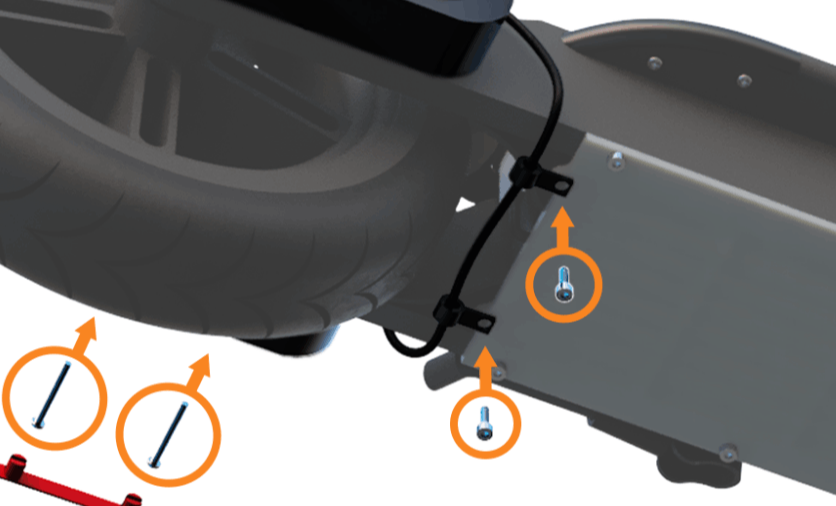
rLight wire fixed with bolts under the frame
It worth mentioning that there were another two options to deal with the wire, but both of them had significant disadvantages:
1) To make the wire run under the fender (i.e between the wheel and the fender). This, however, would make the installation of rLight not user-friendly at all; you would have to dismount the rear wheel, install rLight, then to mount the wheel again, plus to calibrate the brakes after wheel installation. Too long, too annoying and, what’s more important, not everyone can calibrate the brakes the right way. Moreover, this option has nothing in common with the idea of rLight quick removal.
2) To make the wire run above the fender. The simplest method, isn’t it? And the worst one! Despite the fact, that this method would allow the quick removal of rLight, the possibility that one day you will break the wire with your leg while riding is too high, we would say the probability is 99.9% . Apart from this, don't you think that a wire on your deck or rear fender would look just awful?
For us reliability is a top priority! And so far, we don’t see a more reliable way of fixing rLight on the frame and to make it withstand the “shaky environment” caused by bad quality roads and absence of suspension than using simple, but time-honored metallic bolts. In this particular case old school is the best school!
Despite the fact that both suggestions were rejected, it was a good experience after all. We ourselves have never considered the quick removal option before those requests were done. So, we would like once again to encourage you to keep making the suggestions, we will surely take them into account both in terms of developing new light accessories and to rethinking the design and functionality of existing once.
P.S. If you’d like to comment over the above discussion, you are welcome to do so on our Facebook page under the post devoted to this article.